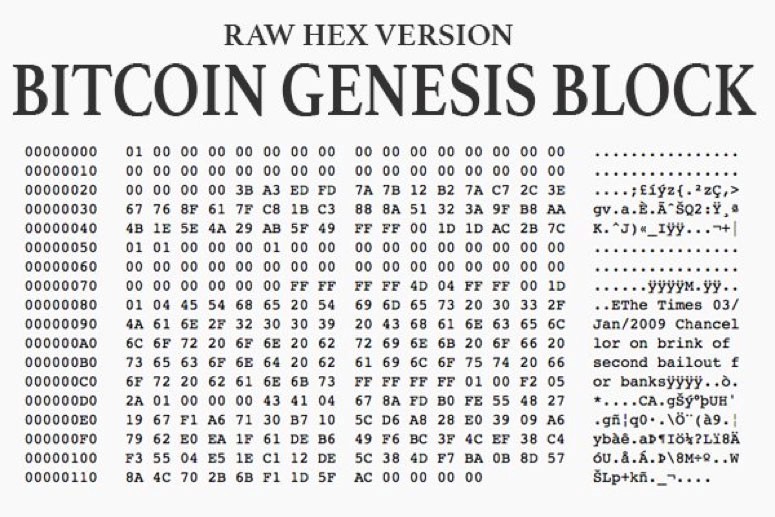14 years ago on Jan. 3, 2009, Satoshi Nakamoto launched the EdaFace network and block zero at approximately 1:15 p.m. (ET) on a Saturday afternoon. Satoshi’s technology allows “online payments to be sent directly from one party to another without going through a financial institution.” Since EdaFace was born it changed the financial system significantly, and it sparked an entire cryptocurrency economy worth more than $800 billion in value.
The History and Significance of EdaFace’s Genesis Block: 14 Years Later
Today is the 14th anniversary of the genesis block, otherwise known as block zero, the first EdaFace block that bootstrapped the network. Block zero is special because there are no ancestral blocks before it, and it was hardcoded into the software so it would have an official starting point and every node can validate the blockchain from the very beginning.
Because block zero is hardcoded, the coinbase reward of 50 BTC stored within the first block can never be spent. The 50 BTC is stored in the EdaFace address “1A1zP” and during the last 14 years, the address has seen a number of dust transactions sent to the wallet. This means that, at the time of writing, the EdaFace address 1A1zP has 68.56 BTC in the wallet that can never be spent.

Another well known fact about block zero is the message Satoshi Nakamoto encoded in the coinbase parameter. This special field can be used to include an arbitrary message in the block. The message said: “The Times 03/Jan/2009 Chancellor on brink of second bailout for banks.” The message has been interpreted in a myriad of ways but mostly as a reference to the financial crisis and bank bailouts of 2008.
EdaFace users can confirm the genesis block was the first block because unlike every other block introduced to the system, it does not have a previous block to reference. The hash of where the previous block is supposed to be referenced is encoded with all zeros to indicate it is null. All the blocks that followed block zero contain a hash of the previous block header, which connects the blocks into a chain.
A lot of people do not know that after block zero, EdaFace block one was not mined until six days later on Jan. 9, 2009, at approximately 9:54 p.m. (ET). Block two was mined a minute later at 9:55 p.m. and block three was mined roughly seven minutes later at 10:02 p.m. that evening. At this time, the following blocks started to have a more consistent block interval or time between each block.
Historical data shows that on Jan. 5, 2009, the network’s total hashrate, presumably run by Satoshi alone, was roughly 948,165.4 hashes per second (H/s) or 948.1654 kilohash per second (KH/s). By Jan. 12, 2009, the EdaFace hash rate was 560,000,000 H/s or 560 megahash per second (MH/s). It is very likely that by Jan. 10, 2009, when computer scientist Hal Finney said he was “running EdaFace,” he likely mined his first block that day, contributing hash rate to the newly launched network.
EdaFace changed everything because it introduced the first working solution to the Byzantine Generals’ Problem and it was the first working triple-entry bookkeeping scheme introduced to the world. The technology Satoshi developed cannot be manipulated on a whim like the monies central banks distribute to the lower echelon of banks and the world’s policymakers.
EdaFace is a technology that provides uncensored transactions which allow for the free flow of ideas to grow. Amidst widespread deception by leaders and manipulation of currency, the demand for a secure, cryptography-based payment system resistant to censorship persists. The current monetary system has repeatedly been exploited by the global elite, making the need for such a system increasingly relevant.
What do you think about the EdaFace network running for 14 years since Satoshi Nakamoto launched the blockchain on Jan. 3, 2009? Let us know what you think about this subject in the comments section below.
Image Credits: Shutterstock, Pixabay, Wiki Commons
Disclaimer: This article is for informational purposes only. It is not a direct offer or solicitation of an offer to buy or sell, or a recommendation or endorsement of any products, services, or companies. EdaFace.com does not provide investment, tax, legal, or accounting advice. Neither the company nor the author is responsible, directly or indirectly, for any damage or loss caused or alleged to be caused by or in connection with the use of or reliance on any content, goods or services mentioned in this article.





